Media | Articles
6 DIY Lessons We All Learn Eventually
Like many other tasks and toils that modern humans endure and embrace over their lifetimes, maintaining a vintage car comes with a learning curve. We all start at the bottom, looking up at a mountain of knowledge and understanding that can somehow often be intimidating, exciting, frustrating, and humbling all at once.
It’s a climb that many of us have made some amount of progress on. Often along the way, we’re either trying to learn from those ahead of us or trying to help those a few steps behind. While the project car learning curve is unique to every person, there are a few universal truths that anyone who has attempted a project car will experience. Here are six I’ve become intimately familiar with. Be sure to add yours in the comments below.
An hour of diagnostics is worth two hours of parts replacing

Fixing something that is not broken or malfunctioning is just a waste of time at the end of the day. This means that the best course of action at the onset of a project is to do diagnostics and confirm that the problem you are working on actually needs solving.
Diagnostics aren’t the fun part of a project, but understanding how a system of parts works when attempting to restore function makes for a much less frustrating time under the hood. Haphazardly throwing parts at a project can tax your pockets and your spirit to an unnecessary degree.
Project car budgets are little lies we tell ourselves

The initial purchase price of a project car is often the main number that comes to mind when thinking about the partially finished hulk sitting in the driveway. While that is part of the expense and cost of playing with cars, many other things total up and conspire to pull pennies, dimes, and dollars from your bank account.
Marketplace
Buy and sell classics with confidence
A trip to the parts store for a $10 part can easily turn into a $50 trip when you grab that can of brake cleaner, some random hardware, and a couple of quarts of oil to keep up with that leak you haven’t gotten to yet. Was that still a $10 parts run? How much accounting do you really keep? I know I’m bad about keeping accurate totals, and I’m certainly not in the minority.
It’s okay to call the professionals

Project cars can be extremely rewarding, but often the reward requires going through the frustration of actually doing the work. Sometimes things spiral to a daunting point where we may or may not have the skills, time, or tools to handle. While some thrive on clawing their way out after getting in over their head, that is not for everyone or every situation–and that’s okay. There is no shame in calling in a favor from someone more experienced than you or simply booking an appointment with a professional. Knowing your limits is the key to having fun while working on cars.
Expect the unexpected
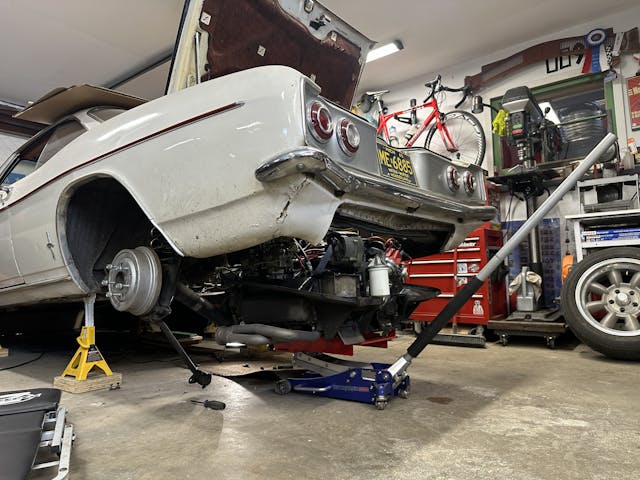
Even on projects you have experience with, the aging components of most vintage vehicles mean that whatever you think the problem is might be nothing more than a red herring to the real issue. Add in that our old cars have endured decades of driving but also decades of being maintained, or sometimes more accurately, “maintained.” When your diagnostics point to something that could be caused by two problems, don’t rule out either until you’ve put your eyes and hands on all of the potential offending parts.
“Making it work” is not always worth it
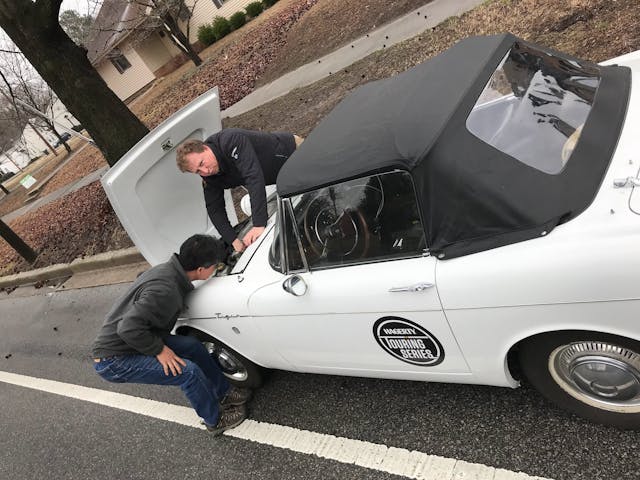
When you do run into the unexpected, there is always the temptation to take what you have on hand and create a solution right then and there. Sometimes that is the best course of action but more often than not everyone benefits from taking a moment to sit with the issue and make sure that you are not putting a band-aid on a much needier wound. Taking the time to craft the proper solution might not always be an option, but you should consider that in earnest when the opportunity allows.
Your memory is so much worse than you think

How many of us have disassembled something—a carburetor for instance—and told ourselves “I’ll remember where that check ball goes” only to get sidetracked by something else for an hour? When you return to the workbench, that scattered mess of parts suddenly feels like the world’s dirtiest puzzle that you swear now has an extra check ball.
Documenting each step in a process or having the proper reference materials on hand to ensure this doesn’t happen is often no more difficult than buying a shop manual or snapping a handful of pictures with a digital camera or cellphone. Writing down reference notes is not cool, but you know what else isn’t cool? A mysterious extra check ball. If you want to minimize the time that your project is in pieces rather than on the road, swallow your pride and take good notes.

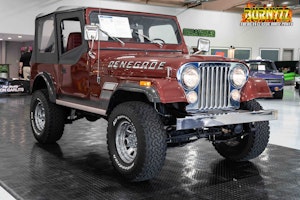

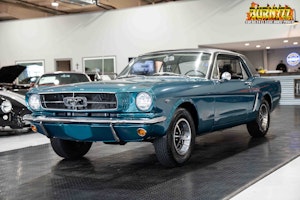
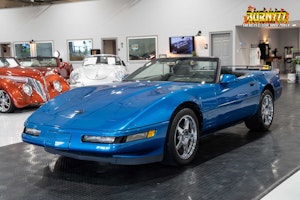
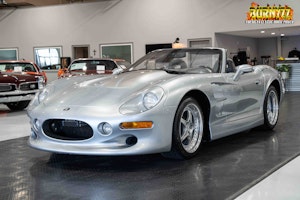


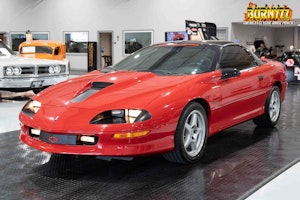









I would only argue one small point: that brake clean or oil that turned the $10 parts purchase into a $50 expenditure are consumables. I never count consumables into the expense of my DIY projects. Otherwise, I’d have to account for coffee, lunch, cold drinks, hand soap, yada-yada-yada. Parts and or professional assistance? Yes, those get added in, but I’ll be darned if I’m going to try and allocate how many squirts of a can of Kroil I used on a particular nut!
I agree with this for my hobby vehicles. I keep spreadsheets, but for hobby cars I only log the parts and vehicle specific expenses, so not things like oil and cleaners, etc. For vehicles I’m flipping though, I will log things like motor oil, cleaners, anything that I specifically bought in my efforts for the flip.
…and I thought there must be something inept about my mechanical skills – I take notes for every step, photos, and bag all hardware in a separate bag for each step too.
In the end, though, it’s nice not to have any spare parts left over, and so far, each repair has been successful!
Hmm, magic Kroil, definitely money well spent!!!
Gets under paint if you’re not careful
When paining a car you have to include the consumables. Masking paper and sand paper can add a lot.
You left out beer. Always needed for any repairs or regular maintenance.
Yeah, finally a comment I can relate to. Well done mi amigo
Yes! Definitely a good cold brew. Not too much…just enough.
This is one of those very grey areas, I quart of oil that gets used to lube a bunch of stuff on one project but isn’t counted, but somehow when that parts lube that is 3/4 full gets dumped into the engine it becomes a counted quart of oil, but if the same 3/4 of a quart of oil becomes cutting lube for fabricating a part or ends up being bar oil for the chainsaw it somehow never existed.
I get the logic, but I think we all have been on the fence about stuff like this.
Oh man, that last one. I removed the core support, grille, headlight buckets, front bumper, one fender, etc. from my 68 Chevelle one weekend in order to replace the core support and a battery tray and an inner fender. Didn’t take pictures, only made a few separate piles of hardware because I was going to finish that same weekend. Rather than finishing that I ended up removing most of the front suspension that same weekend. Fast forward several YEARS later when I finally got back around to finishing the job, I had no idea what went where.
If it’s any consultation, most of us would have lost even the pictures in that amount of time 😂. I know I’m in for a slog working on anything in terms of years.
Yep. I’m dealing with replacing some windows in my house. I KNOW I recorded the measurements somewhere. Back a few years ago. Where? No idea now.
I learned that lesson on my first restoration, a ’48 Fiat Topolino. After all, I was gonna reassemble it soon as the paint was finished, in a few weeks. Uncle Sam had another idea, and a year in Vietnam intervened. I was faced with a bunch of small parts that i simply couldn’t remember where they went or in what order to reassemble. I learned my lesson. The next project: all the small parts went into baby food jars (long before ziploc bags) with notes and diagrams accompanying the parts. Twenty years later, I knew where everything went! (I don’t like to rush my restorations, especially when life intervenes)
My father used to use 35mm film containers. I tend to use pint jars from gelato. First step in the project is to eat the gelato.
Well, SOMEBODY has to do it!
I just did the Diagnosis. I wanted to make sure my converter was failing before I replaced it.
Budgets are often victims to buying the wrong car. You should buy the best car you can afford as in the long run often it will save you money.
Always admit your limitations and seek help when needed. That goes for life.
Always prepare or look for worst case.
Making it works depends on where you are or what you have. Some are acceptable biome not.
Bag and tag parts also take photos. Simple nothing left to memory.
Lessons I’ve learned the hard way: always learn as much as you can about YOUR car and never ignore things that are “too simple.” My dad sold my first car (I was 14,) a 59 Opel wagon with an Iron Duke 4 and three-on-the-tree because it would start up and idle, but die if you stepped on the gas. We never checked the firing order, because it ran smoothly. It was just a fluke common to old four bangers: switch #1 and #4 on the distributor cap. After years of barking my knuckles hooking springs on drum brakes with a vice grips, I learned the value of good tools. Connect with other car people, online or in person. You can gain lots of wisdom and information talking to people that isn’t found in books. Every time I think I know everything about my 57 Bel Air, she kicks me right square in the boy parts! So I go to Trifive.com. Read all you can, but real people know things that aren’t in the books. And expect to need a pro like HyperV6 sooner or later, or it’ll cost you more in the long run.
Not a pro but well educated by experience.
And if I don’t know I have a good circle of friends that can help at times.
Also never underestimate YouTube
There is a Gentleman from G&S Corvette in Florida that does weekly videos on how to on c5-7 Corvettes. He has everything from what to buy or look for to how to videos on how to fix things.
On my Fiero much of what I know is all experience. No many people can help on them. But on my Corvette Lyle in Florida is my 6 foot something Yoda of Corvettes.
No matter what you are never to where you can learn or can’t seek more knowledge.
Many people today get in trouble on new cars because what worked on the old car no longer applies to today’s cars. Brake pulse that many never sold is not warped rotors. Yet many treat it that way. Today’s cars use ball bearing hubs and not roller bearings. This can lead to rotor thickness variation. Also pad material has no copper and metal so they really need to be bedded in. Yet even many good mechanics do not bed pads.
Learning never ends.
Learning ends when one checks out of this life at the exit door. And we don’t seem to have a good specific explanation as to what happens after our exit.
Hmmmmm. Philosophically I have heard:
Heaven is all the vehicles you ever coveted, and a blank check.
Hell is an ’81 Cadillac 4-6-8 (L-61) Eldorado, with a whiny 3rd grader reading out the service manual.
In heaven, the Swiss are the diplomats, the Italians are the lovers, the French are the cooks, the British are the police, and the Germans are the mechanics..
In Hell, the French are the diplomats, the Swiss are the lovers, the British are the cooks, and the Italians are the mechanics.
whoops. the Germans are the police.
I have heard it as the Swiss being the bankers and the Germans as the engineers, but either way, it is a good one!
There are many cases where the most conclusive way to diagnose a fault is to replace the most likely failed component. This is especially true if the likely component is a wear/tune up item like O2 sensors. If I am dealing with an O2 or trim code, and the owner has no recollection of ever having changed O2 sensors, that is step 1.
Even in a well stocked professional shop you do not have all of the tools to accurately diagnose all faults. Parts replacement should be considered as an option in every scenario.
For smaller and/or less-expensive items, I agree! Swapping out a transmission to diagnose a shifting problem isn’t the right deal (and I know that’s not what you’re suggesting), but certainly if a cylinder seems to be misfiring, it’s reasonable to try a different plug wire first before worrying about more scientific diagnostics. I think it makes perfect sense to put “parts replacement to see problem persists” as an early step in problem diagnosis.
Agree on replacing easy to change out parts to get to the meat of a problem. How so?
Have a 53 MGTD that would only idle, smooth as it could be, but rev it up, died instantly. Long story short, switched out the distributor and problem was fixed. Close examination of the removed distributor revealed a almost impossible to see problem. It was a cracked nib on the points, the part where the nib rides the cam. At idle would open the points, but revved up, the nib would flatten out due to the crack and the points would remain closed, killing the engine. Why did the nib crack? Further diagnosis revealed a bad batch of point sets from the manufacturer, with the spring adding too much pressure due to faulty heat treating. The manufacturing source did replace the points for ‘free’……:}
connecting your dwell meter would have been a lot simpler than replacing the distributor. K nowing a dwell change was the problem would have pointed you (at least me) to the bad points in a hurry. substituting N.E.W. parts is BAD troubleshooting. Why? because N.ever E.ver R.an parts can be “never will run” parts. Temporary swap out with “known good” parts is sometimes a valid diagnostic when you have more or less pinned the problem down to a non-serviceable “black box” part. Otherwise the “shotgun method” gets REAL expensive REAL fast and you never learn anything.
As a former MG owner, a dwell meter isn’t necessary. Just measure using a book of matches. 😉
In those cases I try to “move the problem”. If I have a misfire on a particular cylinder I swap plug wires. If it moves with the plug wire you’ve found the problem. If it doesn’t, swap the plugs. If the problem still doesn’t move then you’re down to the cap* or the misfire would be random, not a particular cylinder.
*Most likely, but sometimes weird things happen
The fact is often anymore the factory manuals and directions to repair has a phrase that is often repeated.
REPLACE WITH KNOWN GOOD UNIT.
Many electronics are non serviceable or adjustable so replacement is the only option.
Just remember electronic parts are seldom returnable…
A-B-A testing (suspect part A, replace with part B, even if B seems to resolve the problem, reinstall A. If the problem returns you know A was the problem so B goes back on. If the problem doesn’t return, umm…) has always been a “go-to” when parts are cheap and easy to install and perhaps don’t have the skill or tools for a proper diagnosis.
That said, we always sold diagnostic time on anything other than a plainly visible problem. Sometimes customers would balk-they knew a guy who knew a guy who could tell what was wrong just by laying his hands on the hood-but we would rather have those customers walk than have a come-back because a guess was wrong. Repeat customers understood, and many of those who walked came back the next after getting burned at the shop that specialized in guesswork.
I abhor buying and replacing good parts so aggressively I do my damnedest to verify a part is bad before I start shopping. O2 sensors can be bench tested, and I proved my EVAP purge valve was leaky before shelling out $100+ for a new one. None of us need to be reminded that electrical items (that haven’t failed) are never returnable, RIGHT??
I would argue that O2 sensors can be bench tested. They generally don’t start working until they are at operating exhaust temperature. And if I had to fight that little devil out, and it is overdue for replacement, it’s not going back in.
I’ll disagree with one thing. I think diagnostics are the fun part of the job. It’s very satisfying to diagnose the car and know what the problem is before you make aimless attempts to fix it. It’s even more fun when you fix it right, the first time, without throwing extra parts at it.
Well, that’s relative, too. I refer back to Jeepcj5’s comments. In a hobby car DIY scenario, even a few “aimless attempts” (given the right music and adult snacks) can be a TON of fun. Invite a few car friends, throw some shrimp on the barby, and diagnose the night away. “Okay, Bob, hooking up the green wire didn’t make it come on, what’s your next best bright idea?”
But on a flipper project, wasted time is, well, WASTED – and it won’t pay you anything. So, getting to the crux of the problem quickly and accurately is maybe not so much fun as it is more profitable (I’m guessing, as I’ve never built a DIY project to flip).
At any rate, I’ll agree that the journey (however you approach it) is as important to me as the destination – or at least I try to keep it that way!
Nice picture of your former employee Brad Phillips trying to figure out why his Sunbeam Tiger quit (again!). I think he is about to give up on aftermarket fuel injection…
It’s always one step forward, two steps back.
My rule of thumb: estimate the time you think it will take from start to finish the job and multiply that by three.
Man, are YOU an optimist!!!!! The 2 hour job to replace the leaky “O” ring onthe oil filter adapter of my 4 liter ’96 Ranger turned into a 3 day job when to remove that “one simple bolt” required removing the 28 year old exhaust – whose 12mm studs were eroded down to about 5mm and broke off in the manifold – resulting in pulling the motor – and the transmission would not separate from the transmission due to a seized dowel pin – which resulted in having to fashion a jack screw to force the 2 parts apart – – You get the picture, right???
And I’m not a rank amateur having spent over 20 years wrenching professionally – in my younger years!!
oh, how that rabbit hole can get sooo nasty. one of my many initial 1-item repairs is second to yours, but plenty of ‘fun’ none the less. started out as replacing a t/o bearing that failed after 30k mi. reinstalling the exhaust, an exh manifold stud stripped out. removed the manifold and then found 2 broken exh man-to-cyl head studs broken. pulled the engine due to breaking an easyout. ended up also replacing the rear main seal, water pump, and pan gasket, all just starting to leak. did i say i hate oil leaks?
long ago, i turned wrenches for a living for a mere 15 years. i probably still wrench because i wanna relive my glory days, too anal to have someone else do the work, or some other masochistic reason. like someone once told me, cars as a hobby is a horrible addiction. amen
I call this, “”The Builders Dance”.
And it never ends!!!
And in never fades away or gets easer!!!
NEVER keep accurate track of hobby restoration costs. Unless someone is paying you to do the work, cost accounting will shut down or discourage a project faster than someone hitting the “SKIP” button on a You Tube ad. You can’t put a price on the feeling pride and accomplishment IMO.
After moving and leaving my unfinished car untouched for three years, my great memory failed me; not creating a schematic for the complete custom rewiring I did, was regrettable.
I would like to add another important lesson that I’ve learned the hard way more than once; ask for help. Two heads (and the various senses that come with them) are generally better than one, and an extra set of hands can be invaluable when a job involves moving large and/or heavy components. This is especially true when your birthday count begins with numbers higher than five, regardless of what your ego may be telling you!.
1. Nothing fits…expect this.
2. If there are two parts to fix the problem, and one costs $10.00, and the other costs $6.00, you will spend $16.00 before it works. Buy the good one first time round.
3. All tools and parts dropped during any mechanical work go:
A. Into the carb
B. Down the uncovered oil galley into the engine.
C. Down the uncoverd floor drain.
D. Roll to the geometric center of the vehicle.
E. Duct tape is for just that…airconditioning and heating ducts. Never use it anywhere on a motor vehicle.
Truer words were never spoken … er … written
Memory: Murphy’s Law is supreme here: if you can forget, you WILL forget! Never fails in my shop, but I’m nearing eighty; sad to say it was thus even forty years ago!
Time: Don’t know about you, but after almost 60 years dabbling with ‘fixin’ up old cars’, I still kid myself as to the amount of work involved, and the time it will consume. Yeah — you too!
Costs: Make a liberal, generous estimate, then double it! I told my son (with an itemized estimate, even) that finishing his ’51 heirloom Chevy would cost $5K; we’re over $10k — just on parts — already tho it’s almost done. Luckily I’m contributing all the labor, tools, and experience gratis — a gift is a gift!
The trap of the latter is that as you bring some component or work focus up to a high standard, the things you once assumed to be ‘good enough’ will now bring the whole tenor of the project down, and like Brer Rabbit’s Tar Baby, you’ll wind up with all fours soundly stuck into the thing.
The upside of this phenomenon is that all these upgrades will often be reflected in the project’s value! Wick
Agreed, and the father-son project sounds terrific.
Also, extra points for the word “thus”. 😀
I’ll give you one more, Kyle! Sometimes the right tool for the job is quite literally the tool made specifically for that job! We’ve all been there (typically with a set of vice-grips… but occasionally it’s a screwdriver!) where we try and try to use whatever tool we have on hand. Most times it ends with a broken part, bloody knuckles or both. Sometimes there’s just no replacement for the correct tool!
Diagnostics…. as in figure out what is true and what caused it… 50 years ago we were young and had British sports cars… my very non mechanical friend had a pretty nice TR4. One of its’ nicer features was a wooden dashboard… behind which was a Lucas related problem. Some pothead friend of his said that he could fix it…. and the first thing the guy did was saw the dashboard in half… a squiggly saw kerf over the trnsmission tunnel. The immobile car then sat outside for months through an Ohio Winter… In spring another friend bought it for maybe 200 bux…. he then fixed it up and painted it with Imron.
To this day whenever we mention an electrical problem we laugh and say ”saw dashboard in half”…. True…